Member (Set) Representatives Option in RFEM 6
The Member Representatives option is one of the innovations in RFEM 6, and it can be activated in the Base data of the model as shown in Image 1. Once this option is activated, the Member Representatives Wizard appears, in which the user can choose the property based on which the member representatives will be created.
As can be seen in Image 2, members can be grouped according to the same eccentricities, hinges, supports, orientation, definable stiffnesses, and so on. When a specific design add-on is activated, they can also be grouped on the basis of design properties such as effective lengths, design supports, reinforcement, service classes, and so on.
In the same fashion, Member Set Representatives based on a specific member set's property can be created and edited.
For instance, if the members are grouped according to the effective lengths as a design property, the program will collect all elements of the structure that have the same effective length into a single member representative.
In other words, it will create as many representatives as there are members with different effective lengths (Image 3). The advantage of this feature is that instead of editing the properties of each member individually, it is enough simply to edit the properties of their associated Member Representative.
Practical Example
Once the member representatives are created, their properties can be edited easily. As mentioned before, this provides many advantages in terms of modeling and design. One of them is the possibility to assign reinforcement to all the members represented by the same member representative. To demonstrate this, the concrete structure in Image 4 will be used where member representatives based on the design properties have already been generated.
In this example, both the shear and the longitudinal reinforcements will be assigned to the columns by editing the properties of their associated member representatives. According to Image 4, the columns are colored in red and belong to Member Representative 1, the properties of which can be edited easily in the Edit Member Representative window (Image 5).
Hence, two-legged stirrups with a diameter of 8 mm are assigned as shear reinforcements at 15 cm and 7.5 cm on the ends and along the span of the member, respectively. In the same manner, 4 rebars with a diameter of 14 mm are assigned as longitudinal reinforcements in each corner (Image 6).
The reinforcement defined via the Member Representative window is now assigned to all the individual members represented by this member representative. To show this, Member Representative 1 is selected and a visibility by selected objects is created (Image 6).
Final Remarks
The Member (Set) Representatives option in RFEM 6 allows members and member sets with the same properties to be grouped together. The representatives can be created on the basis of different member properties such as hinges, supports, eccentricities, nonlinearities, effective lengths, reinforcement, and so on.
The advantage of this option is that the properties of multiple individual members can be edited directly, via the properties of the associated Member Representative. Hence, the properties of various members can be assigned as well as modified in a quick and straightforward manner.
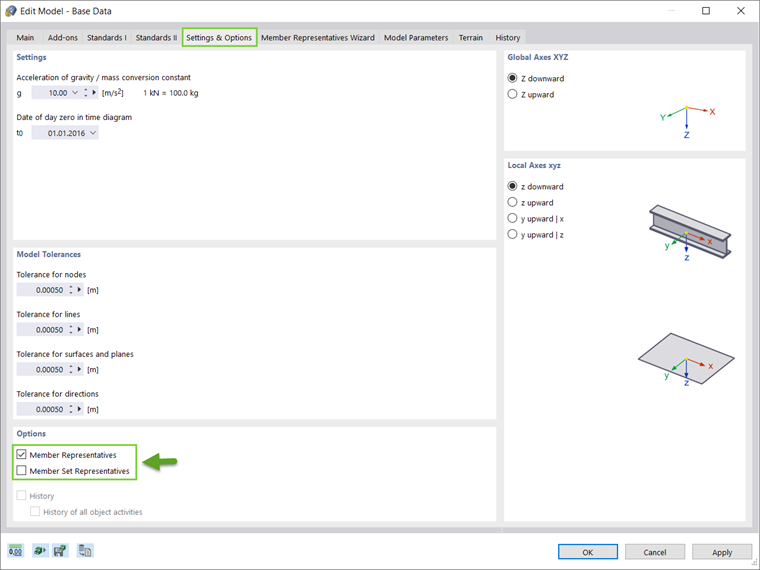
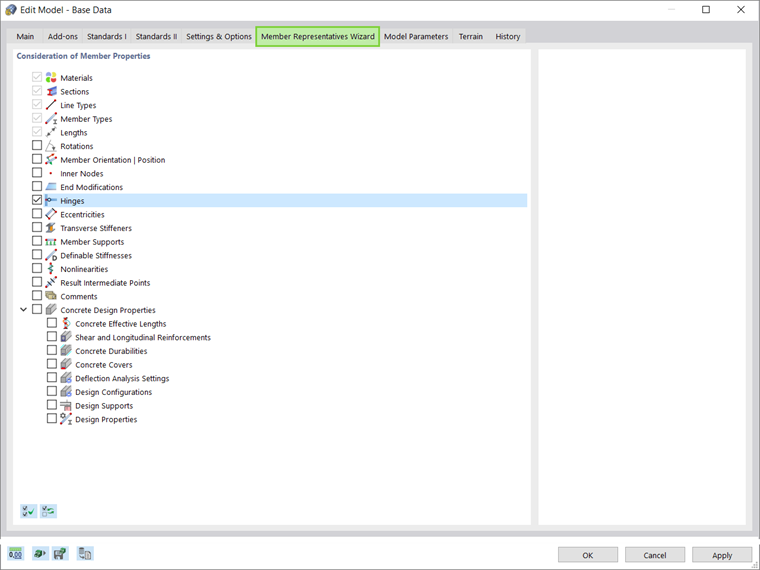
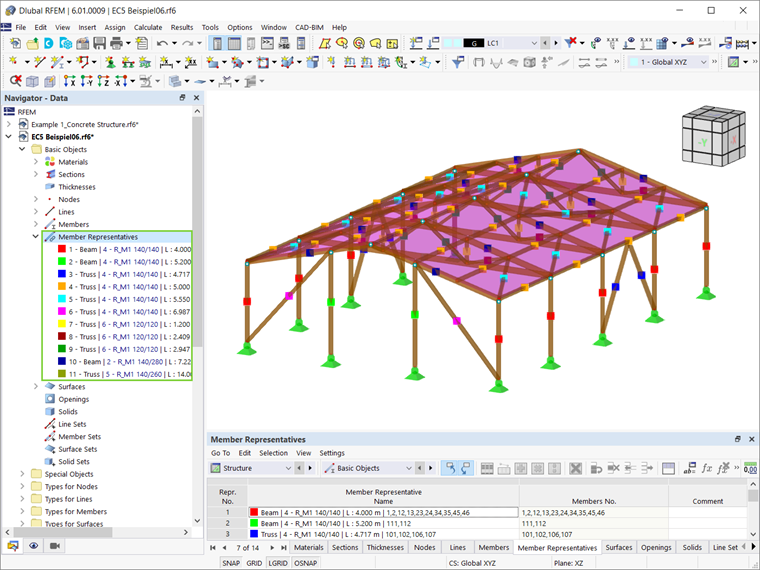
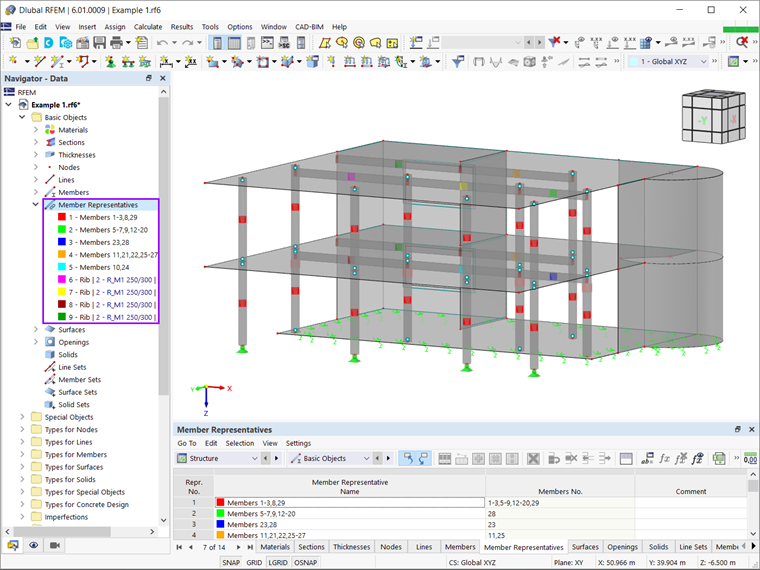
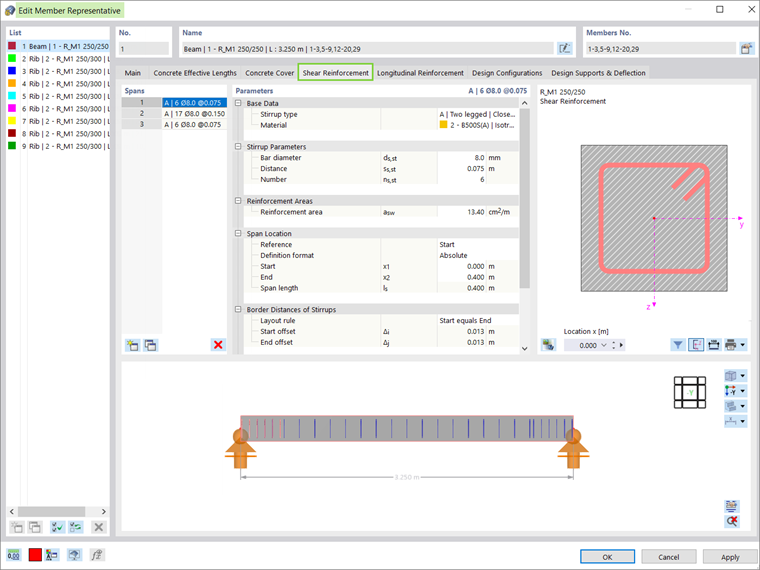
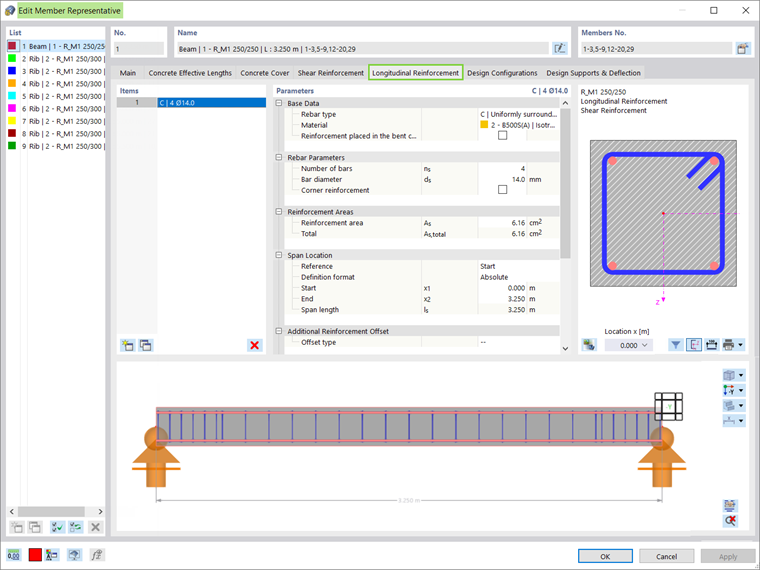
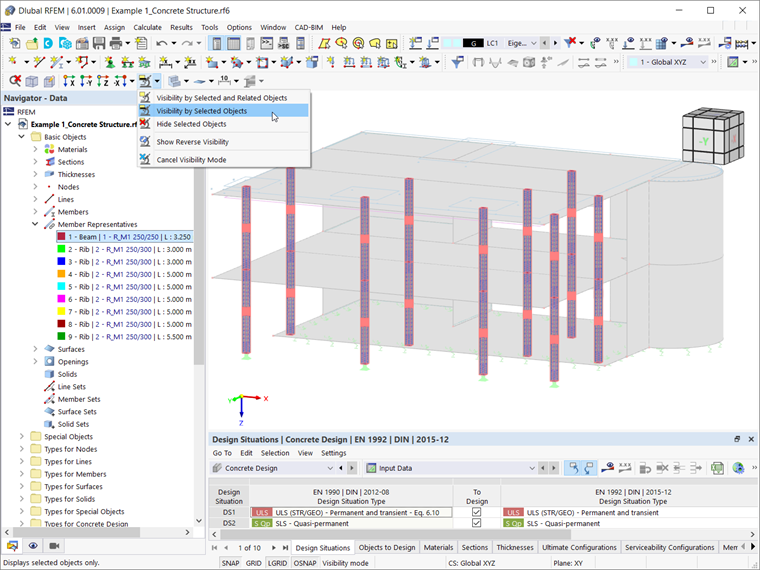
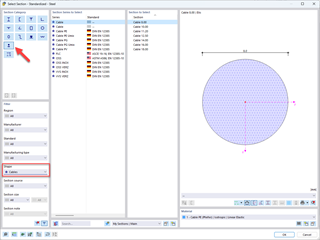
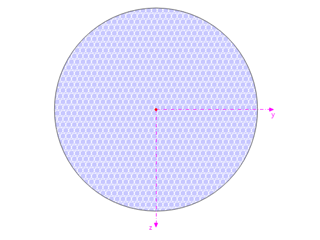

































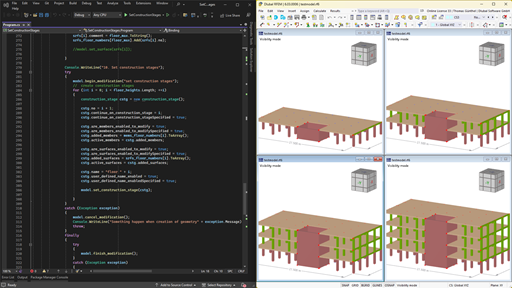
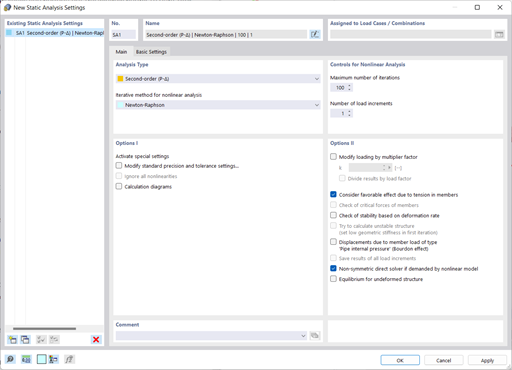
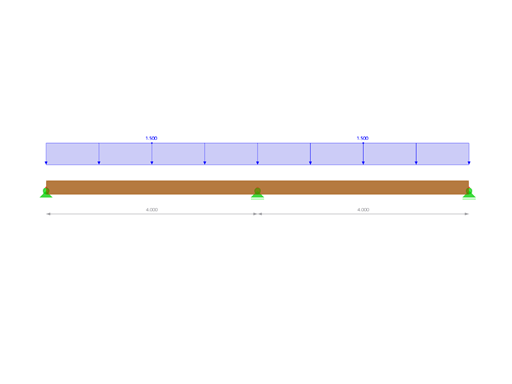
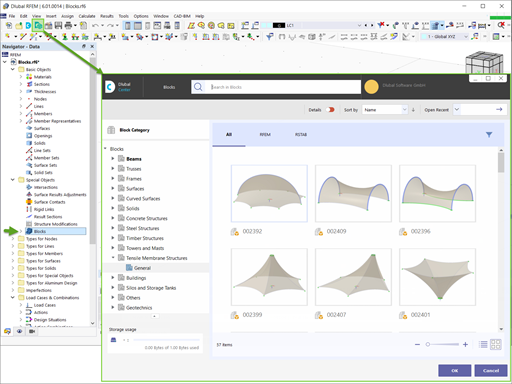






























.png?mw=600&hash=49b6a289915d28aa461360f7308b092631b1446e)














